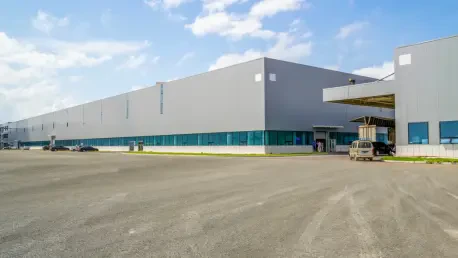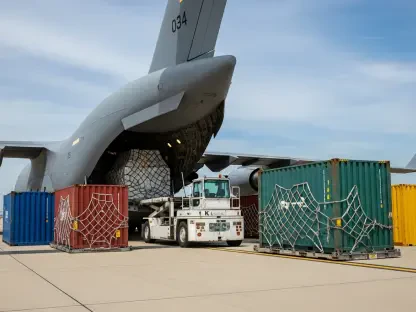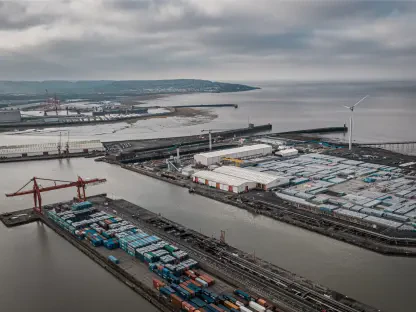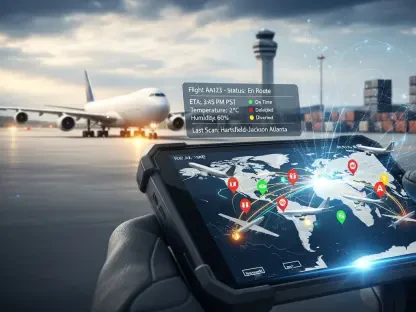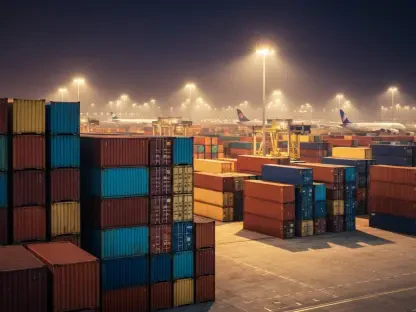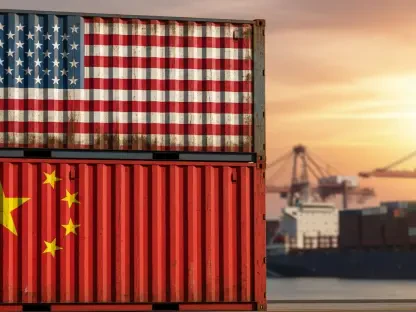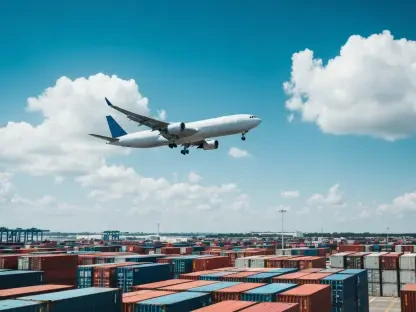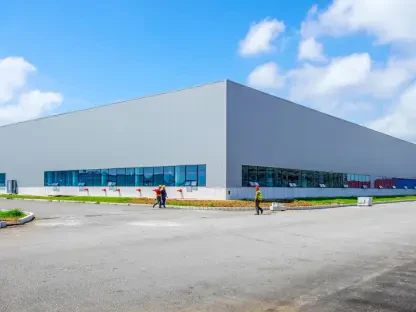Overview of the SF Gateway Project
In the heart of San Francisco’s Bayview-Hunters Point neighborhood, a transformative vision is unfolding that could reshape the industrial landscape near the 280 freeway, with Prologis, a prominent developer in supply-chain real estate, proposing the SF Gateway initiative. This redevelopment plan aims to replace four aging warehouses—two currently operated by Amazon—with two expansive, modern buildings, creating a major delivery hub spanning four city blocks, complemented by retail spaces, artist studios, and light-industrial areas, all without any residential components.
The scale of this development is significant, focusing on job creation as a primary goal for an area long seeking economic uplift. With no housing included, the emphasis remains on industrial and commercial revitalization, promising a new chapter for the community. First introduced nearly a decade ago, the project has now reached a critical juncture, with a decisive vote looming at the city’s Planning Commission to determine its fate.
This vote represents a pivotal moment, as the outcome could set a precedent for how industrial redevelopment balances economic ambitions with community needs. The plan’s progression through regulatory channels highlights the urgency and complexity of transforming underutilized spaces into modern economic engines in a city known for its contentious development battles.
Economic Potential and Job Creation
Promise of Economic Growth
The SF Gateway project is heralded by Prologis and local Supervisor Shamann Walton as a cornerstone for economic revitalization in Bayview-Hunters Point, a neighborhood historically marked by underinvestment. Proponents project thousands of new jobs and millions in capital infusion, positioning the development as a catalyst for prosperity. The proposed 1.6 million square feet of delivery space, alongside 20,000 square feet of maker spaces for artists and over 8,000 square feet of retail, underscores a multifaceted approach to economic impact.
Additional features, such as 1,125 parking spaces and what could be the largest solar array in San Francisco, aim to blend sustainability with industrial growth. For a community that has faced systemic neglect, this initiative offers a rare opportunity to attract significant investment and foster local employment, potentially altering the socioeconomic fabric of the area.
Supervisor Walton, representing the district, has emphasized the transformative potential, describing the project as a milestone for District 10. This perspective resonates with many who see the development as a chance to address long-standing disparities through tangible economic benefits, making it a focal point of hope for revitalization.
Market Context and Future Impact
The rise of e-commerce, particularly intensified by recent global shifts, has fueled a surging demand for logistics hubs across urban centers, and San Francisco is no exception. The industrial real estate market in the city is witnessing a transition from traditional warehousing to advanced supply-chain facilities tailored for rapid delivery needs. This trend aligns with the SF Gateway’s focus on creating a state-of-the-art parcel hub, positioning it at the forefront of logistical innovation.
Looking ahead, the project could establish Bayview-Hunters Point as a vital node in regional logistics networks, ensuring sustained economic activity for years to come. The integration of modern infrastructure in this area may attract further investment, creating a ripple effect that boosts ancillary businesses and services in the vicinity.
Analysts suggest that success here might encourage similar developments in other underserved urban pockets, reshaping how industrial spaces are utilized. As consumer expectations for same-day delivery continue to grow, projects like this could redefine the competitive edge of cities adapting to digital commerce demands.
Community and Environmental Concerns
The promise of economic gain through the SF Gateway project is tempered by substantial opposition from local residents, particularly over environmental and health implications. Bayview-Hunters Point carries a heavy legacy of environmental injustice, burdened by past toxic exposures from industrial sites and systemic inequities. Many fear that the development will compound these issues, further straining a community already grappling with disproportionate health challenges.
A primary concern centers on the projected increase in traffic, with estimates suggesting over 6,000 daily vehicle trips tied to the delivery hub. Such activity raises alarms about heightened air pollution, potentially worsening conditions like asthma and cancer, which are already prevalent in the area. Community advocates argue that these risks undermine any economic benefits, calling for a reevaluation of the project’s impact on public well-being.
Prologis has responded with commitments to mitigate these effects, including the use of electric tools and strict limits on vehicle idling times. Despite these assurances, skepticism persists among residents, with many questioning the enforceability of such measures. Additionally, objections from nearby Bernal Heights highlight aesthetic and quality-of-life issues, as the massive scale of the buildings threatens to overshadow the local character and disrupt daily life.
Corporate Influence and Labor Opposition
Speculation about Amazon’s potential role as a major tenant in the SF Gateway hub has ignited fierce debate, despite no official confirmation from Prologis or the retail giant. The company’s current operation of two warehouses on the site fuels concerns that its involvement could dominate the new facility. This possibility has drawn sharp criticism from those wary of corporate overreach in local development projects.
Unions, particularly the Teamsters Joint Council 7, have emerged as vocal opponents, citing Amazon’s track record of anti-union practices as a red flag. They have branded the project a potential sweetheart deal favoring large corporations at the expense of workers’ rights. This stance reflects broader anxieties about the erosion of labor protections in the face of expanding corporate footprints in urban logistics.
Historical city actions add context to this resistance, with the Board of Supervisors previously voting in recent years to impose stricter permissions for delivery warehouses. Such measures underscore a persistent tension between economic incentives and the need to safeguard fair labor practices, placing the project at the center of a larger ideological conflict over corporate influence in San Francisco.
Political Dynamics and Decision-Making Process
The political landscape surrounding the SF Gateway project is as intricate as the development itself, with Supervisor Shamann Walton’s unexpected endorsement marking a notable shift. Previously critical of large corporate expansions, Walton now champions the initiative, having introduced legislation earlier this year to propel it forward. He views the development as a landmark achievement for his district, supported by six co-sponsors on the Board of Supervisors.
However, recent political upheavals introduce uncertainty into the approval process. The recall of Supervisor Joel Engardio, one of the co-sponsors, leaves a vacancy that Mayor Daniel Lurie must fill, potentially altering the balance of support. The timing of this change, coinciding with the Planning Commission’s upcoming vote on the environmental impact report, adds a layer of unpredictability to the project’s trajectory.
This critical vote on the environmental impact report serves as a gateway to further legislative steps toward final approval. The decision will likely hinge on how effectively the project addresses community and environmental concerns while navigating the shifting political alliances within city governance, making it a closely watched process.
Future Implications and Urban Development Trends
The SF Gateway initiative mirrors broader urban development challenges in San Francisco, where economic progress often collides with community welfare. Balancing the need for growth with the imperative to protect vulnerable populations remains a persistent struggle. This project exemplifies the difficulty of aligning industrial expansion with social equity in a city known for its progressive values yet complex land-use disputes.
Emerging trends in logistics infrastructure, driven by the relentless growth of e-commerce, are reshaping urban landscapes, often at odds with environmental justice priorities. In marginalized areas like Bayview-Hunters Point, such developments highlight the friction between modern economic demands and historical burdens. The outcome of this vote could influence how future projects approach these competing interests.
Moreover, the decision may set a precedent for land-use policies, corporate partnerships, and community engagement strategies across the region. Factors such as advancements in sustainable design, stricter regulatory oversight, and evolving political priorities will likely play a role in determining the long-term impact of such initiatives, potentially guiding how cities adapt to industrial transformation.
Conclusion and Broader Perspective
The debate over the SF Gateway project encapsulates a critical juncture for San Francisco, highlighting the intricate balance between economic opportunity and community impact. It brings to light the promise of thousands of jobs against the backdrop of environmental risks, health concerns, and labor disputes. Political complexities, from unexpected alliances to sudden shifts in representation, further underscore the multifaceted nature of urban redevelopment.
This moment serves as a reflection of the city’s ongoing struggle to address modern economic imperatives while rectifying historical inequities. The tensions between corporate influence and workers’ rights, alongside community demands for cleaner, safer environments, paint a vivid picture of the challenges inherent in such large-scale projects.
Moving forward, the resolution of this debate points to the necessity of inclusive dialogue as a cornerstone for future development. Crafting robust mitigation strategies to address pollution and traffic becomes imperative, as does ensuring that economic gains do not come at the expense of labor protections. Ultimately, the path ahead demands a commitment to justice and sustainability, setting a framework for how urban planning can evolve to harmonize growth with the well-being of all stakeholders.
